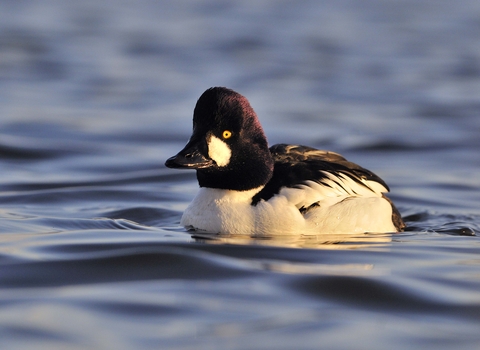
©Fergus Gill/2020VISION
Goldeneye
A medium-sized diving duck, the goldeneye can mainly be spotted in winter when birds fly in from Northern Europe. Conservation efforts have helped small numbers of these birds to nest in Scotland.
Scientific name
Bucephala clangulaWhen to see
January to DecemberSpecies information
About
The male goldeneye is a handsome diving duck. Apart from a small breeding population in the highlands of Scotland, most goldeneye only spend the winter in the UK, particularly on larger lakes and reservoirs. Goldeneye do not really gather in large numbers like other duck species.How to identify
The male goldeneye is a black-and-white duck, with a large, domed head that is black with a green sheen to it. It has a distinctive yellow eye and a white spot in between the eye and bill. Females are grey with a brown head and a yellow eye.Distribution
A rare nesting bird in the highlands of Scotland, and an uncommon winter visitor to lakes and reservoirs throughout the country.Did you know?
The scientific name of the goldeneye, Bucephala, means 'bull-headed' and refers to its strange head shape. This duck makes a loud, double whistle sound as part of its courtship display that can be heard up to a kilometre away.Watch
Goldeneye (https://vimeo.com/444890075)
Goldeneye by Tom Hibbert
